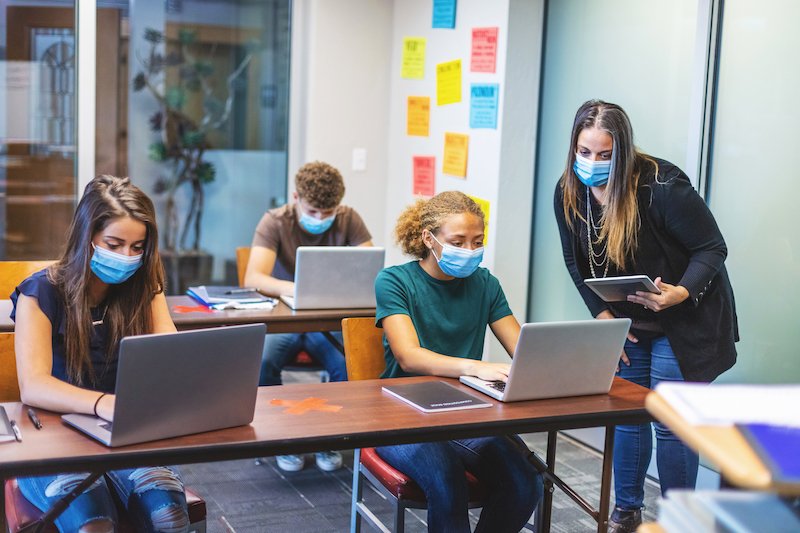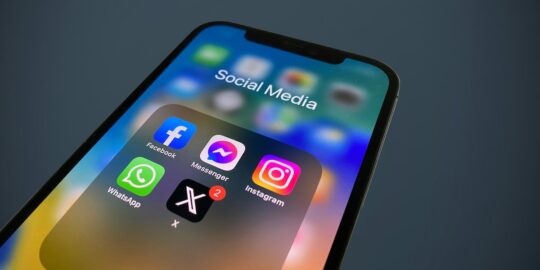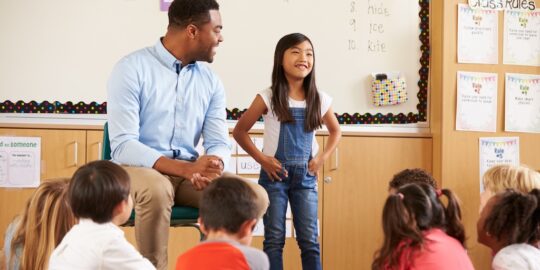
In early 2020, the COVID-19 pandemic forced millions of students worldwide into online distance learning, turning the education system upside down. Flash forward to today, and education as we know it still looks far from ordinary.
Through the chaos, schools and families alike are working to navigate this new norm for education together.
Regardless of approach, nearly all schools have adopted blended learning as they move further into their school year or start a new one, a model that is likely to become mainstream for education going forward.
For some, blended learning will be a hybrid of in-person and distance learning to reduce physical attendance, which allows for smaller groups that meet the social distance standards.
For distance learning, schools will utilize digital technology like Vivi to deliver organized, seamless instruction to students on any device.
As students return to the classroom, teachers will need to rely on collaborative, engaging technology like Vivi to support their students while minimizing group contact. Shared devices, cables and interactive flat panels touched by multiple people will be discouraged. Wireless screen sharing for both teacher and students will be required, to enable seamless content sharing without the presenter moving from their seat.
In school, every facet of the school day must be fundamentally modified: the classrooms, the hallway, the lunchroom, and even the restrooms must be tweaked to facilitate a safe environment for all attendees.
Social distancing will be the primary driver for how school schedules are structured. Schools must limit group sizes, maintain students six feet apart, restrict non-essential visitors, and repurpose community spaces.
Some schools have placed temporary walls within large cafeterias and gymnasiums to allow multiple small groups a safe place to facilitate learning.
Large community meetings such as assemblies and guest speaker presentations must be facilitated in new ways than ever before. Vivi’s Live Broadcast, for example, allows these group events to be streamed to each classroom display from any webcam or mobile device.
Drop-off and pick up now also look different than they have in the past. Times must be staggered for various groups of students, and access to school property is limited for parents to minimize contact.
Student and staff health and well-being has become an even greater priority as a result of COVID-19. Schools have had to adopt symptom monitoring procedures for all staff and students with plans in place for when someone shows symptoms, including contact tracing and quarantine requirements.
Teachers face another pressing issue this year: How to help students recover from the stress experienced by the pandemic and keep them moving forward academically. Social-emotional concerns are at an all-time high after a prolonged period of time away from the classroom for many students.
Teachers are spread thinner than ever as they attempt to care for each student holistically, with so many new elements added to their day-to-day.
Teachers are trained to observe and anticipate if children need help. During the pandemic, teachers must be even more attentive to identify which students need assistance. Vivi’s Student Feedback Tool gives teachers the ability to check in with their students in real time. For many children, a teacher’s intervention can be life changing or even lifesaving.
COVID has presented an excess of challenges for educators globally. Thankfully there is reliable, collaborative technology available that supports school administrators and empowers teachers to engage students and maintain a love of learning.
Contact us to hear how our live broadcast, digital signage and wireless screen sharing features are helping schools globally.



